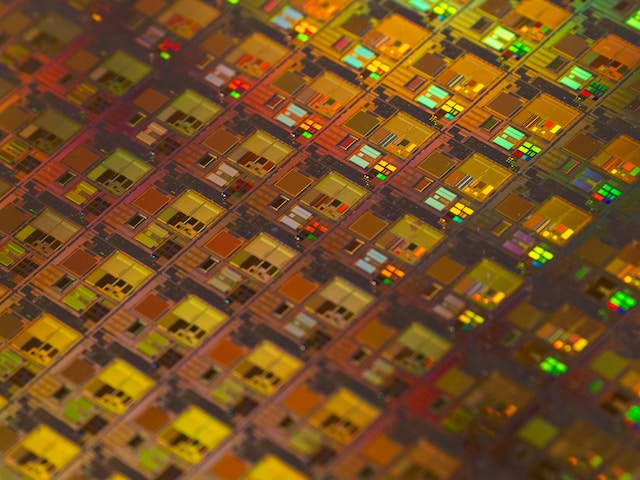
The Role of Microelectronics in Improving Security for Self-Storage Units in New Westminster
Self-storage units have become an integral part of modern living, providing individuals and businesses with a safe and convenient solution to store their belongings. However, ensuring the security of these units has always been a top priority, as they often hold valuable or sensitive items. Traditional security measures have been in place, but with the advancements in technology, microelectronics has emerged as a game-changer in enhancing the security of self-storage units significantly.
Introduction
Self-storage facilities in New Westminster offer a wide range of services, from short-term storage during a move to long-term storage for excess inventory. While these facilities provide convenience and flexibility, they also pose security challenges. Cases of theft, vandalism, and unauthorized access have highlighted the need for more robust security measures. This article delves into the role of microelectronics in transforming the security landscape of self-storage units, making them more reliable and secure than ever before.
Understanding Self-Storage Units and Their Importance
Before exploring the role of microelectronics in improving security, it’s essential to understand the significance of self-storage units in today’s society. Self-storage units provide individuals and businesses with additional space to store items that may not fit in their homes or offices. They serve as an extension of personal or commercial storage, offering a secure environment for belongings.
Security Challenges in Self-Storage Units
Traditional Security Measures
In the past, self-storage facilities relied on conventional security measures such as padlocks, security guards, and CCTV cameras. While these methods provided some level of security, they were not foolproof and had their limitations.
Limitations of Traditional Security Systems
Traditional padlocks could be easily tampered with or broken, leaving stored items vulnerable to theft. Security guards, while helpful, couldn’t monitor every unit continuously, leaving potential blind spots. CCTV cameras recorded footage, but they often lacked the capability to identify individuals effectively.
The Emergence of Microelectronics in Security
Definition and Overview of Microelectronics
Microelectronics involves the design and manufacture of small electronic components and devices. These miniature electronics have revolutionized various industries, and security is no exception. They have allowed for the creation of sophisticated security systems tailored to meet the unique needs of self-storage facilities.
Integration of Microelectronics in Security Systems
Microelectronics has facilitated the development of cutting-edge security systems that combine multiple advanced technologies. These systems offer comprehensive surveillance and access control, making them highly effective in safeguarding self-storage units.
ALSO READ: Microelectronics – what is it
Advantages of Microelectronics in Enhancing Security
Advanced Surveillance Systems
Microelectronics enables the creation of high-resolution cameras with advanced video analytics. These cameras can detect motion, recognize faces, and even differentiate between authorized personnel and intruders. The real-time monitoring feature allows for immediate responses to potential security breaches.
Biometric Access Control
Microelectronics has made biometric technology more accessible and reliable. Biometric access control systems, such as fingerprint or iris scanners, ensure that only authorized individuals can access the storage units. This minimizes the risk of unauthorized entry and enhances overall security.
Tamper-Proof Locking Mechanisms
Microelectronics has revolutionized locking mechanisms, making them tamper-proof and resistant to external manipulation. Electronic locks with encrypted codes provide enhanced security, and in some cases, they can even be remotely controlled through secure mobile applications.
6. Addressing Concerns and Misconceptions
Privacy and Data Protection
As with any technological advancement, concerns about privacy and data protection arise. Self-storage facilities that adopt microelectronics must prioritize data security and ensure that customer information remains confidential.
Environmental Impact
Critics may raise concerns about the environmental impact of electronic devices. However, advancements in microelectronics have led to the development of energy-efficient security systems, reducing their overall environmental footprint.
7. Future Trends and Innovations
Artificial Intelligence and Machine Learning
The future of microelectronics in self-storage security lies in the integration of artificial intelligence and machine learning. These technologies will enable security systems to learn and adapt to new threats, making them even more effective in thwarting potential security breaches.
Internet of Things (IoT) Integration
The IoT holds the promise of transforming self-storage security by connecting various devices and systems to a centralized network. This integration will enable real-time monitoring and remote control, enhancing the overall security and convenience of self-storage units.
8. Conclusion
Microelectronics has played a pivotal role in revolutionizing security for self-storage units. By integrating advanced surveillance systems, biometric access control, and tamper-proof locking mechanisms, self-storage facilities can offer unparalleled security and peace of mind to their customers. As technology continues to advance, the future holds even more exciting possibilities for the security industry.
FAQs
While microelectronics significantly enhances security, it’s essential to choose a reputable facility that implements robust security protocols.
Yes, microelectronics can be integrated into existing security systems, providing an upgrade to the facility’s overall security.
Biometric access control systems are highly reliable, as they use unique physical traits to grant access, minimizing the risk of unauthorized entry.
Modern microelectronics systems often come with backup power options and fail-safe mechanisms to ensure continuous security even during emergencies.
Advancements in microelectronics have led to more energy-efficient systems, reducing their impact on the environment.